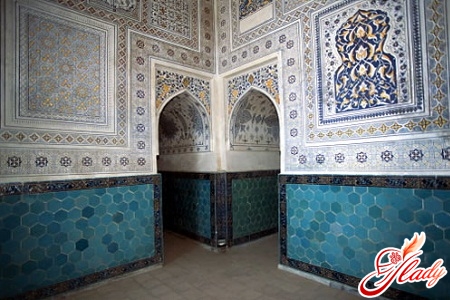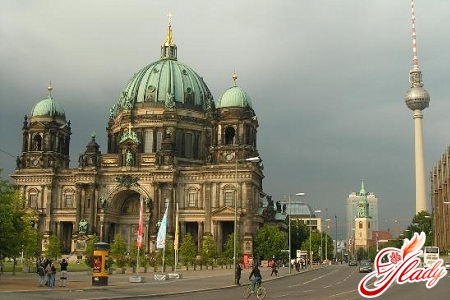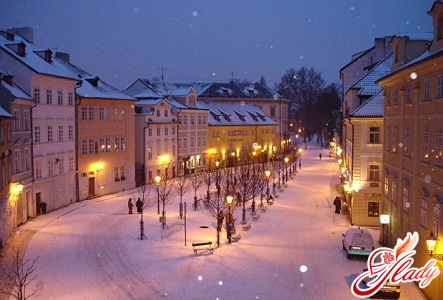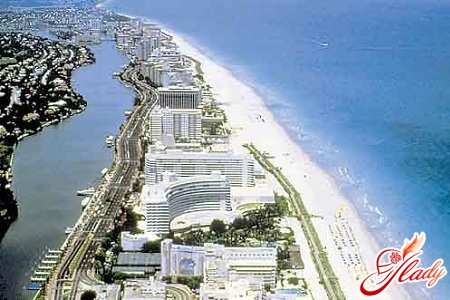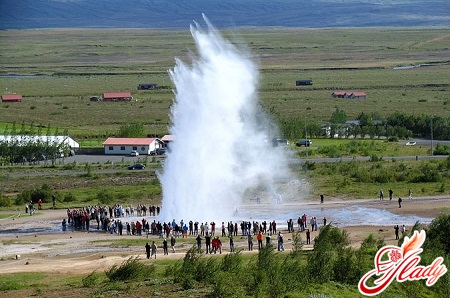
Iceland is a country located onin the north of Europe. The country is located on the island of the same name. It has been called many things! The country of ice and the icy country. The name of the country was given by the Norwegian Viking Flouki, nicknamed Raven. He was the first to visit the island and, having climbed the highest mountain, saw icebergs stretching out into the fjord (although in fact there are not so many icebergs in Iceland). By the way, the brave Viking was able to live on the island for only a year, and then left the land with an unfriendly climate. And indeed: the climate in Iceland, although moderate maritime, is quite mild, but at the same time contradictory. It seems that all seasons reign on the island at the same time: winter fights with summer, warm sunny weather is abruptly replaced by piercing winds. That is why Iceland was an uninhabited island for quite a long time. And this is what attracts tourists from all over the world: its climate, amazingly rich nature and attractions, of which there are a great many. Iceland is a small country, but there are so many attractions that it is called a small country of great wonders.
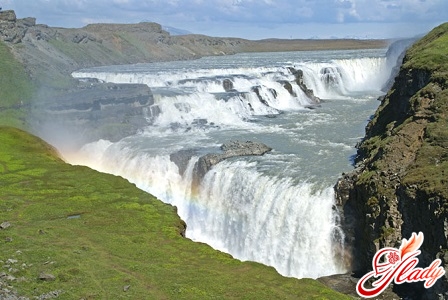
The first wonder of Iceland is nature
Without a doubt, the main wonder of Iceland is itsnature. When visiting a country, we all try to see the cities. In the case of Iceland, everything is different: its main wealth is located outside the bustle of the capital. All the beauty and wealth of the country can be seen by leaving the boundaries of large cities. When visiting Iceland, you must definitely see the geysers and glaciers, the Thorsmörk valley, the Hekla volcano, the Landmannalaugar valley, and the Westman Islands. You can start exploring the city of Akureyri - this is the second largest city in the country. And from there you can go to Husavik, to the Godafoss waterfall and to the island of Grimsey - all these places are located near Akureyri. You can order the Golden Circle excursion - it includes a visit to three attractions at once: the Gullfoss waterfall, the Strokkur geyser and the Thingvellir National Park, but we will talk about each of them in more detail below. In the southeast of Iceland is Landmannalaugar - a mountainous region where hot springs bubble. There you can also see scattered natural "artifacts": canyons, snowy slopes, fields of solidified lava, thawed patches smoking with the smell of hydrogen sulfide, and simply amazingly blue lakes. All this beauty will not leave anyone indifferent!
Popular excursions: Valley of Geysers and Tingvellir Park
There are three national parks in Iceland:Thingvellir, Vatnajökull and Snaefellsjökull. But the most popular in terms of excursions is Thingvellir. However, the other two parks are no less interesting. For example, Vatnajökull is the largest park in Europe (its area is more than 1 million hectares). Previously, there were two more parks in Iceland: Jökulsárgljúfur and Skaftafell, which were united into Vatnajökull in 2008. In addition, the Askja volcano is located in this park, but more on that later. Snaefellsjökull Park is a huge glacier. An interesting story is connected with it: the events in the well-known book by Jules Verne, Journey to the Center of the Earth, unfold right here. The famous Snaefells volcano is located in this park. Thingvellir National Park is a valley dotted with paths. You can wander along these paths all day long and never get tired of it, because it is very, very beautiful here. In addition, there are interesting places here: for example, the witches' pool, where unfaithful wives were drowned during the Viking era; the largest Icelandic lake, Thingvalavaten, and the Thing fields, where the first Viking parliament, Althing, sat. All this is exciting and educational. Thingvellir is listed as a UNESCO World Heritage Site, since the park is evidence of the era of Icelandic democracy. The Valley of Geysers is located nearby. All the hot fountains in the world are now named after the very Geyser that is located here. There are also other fountains here: Gullfoss, a thirty-meter waterfall, is not so easy to get to: there are always crowds of tourists around it. It is called the "golden waterfall". It is believed that its true beauty can be seen and appreciated only in sunny weather. And the Strokkur waterfall gushes as if on schedule, beating every 5-10 minutes. All three fountains are striking in their spectacularity and power. But in fact, Iceland has several dozen famous waterfalls and even more nameless ones.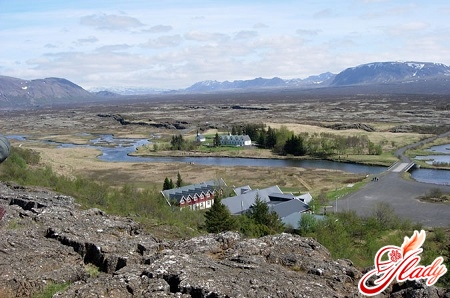
Fjords are a rare landmark of the planet
Iceland is rich in fjords, of which there are many throughout ourThere are not many of them on the planet: there are very few places where this miracle of nature can be found. Fjords are winding narrow sea bays, which are surrounded on both sides by steep rocky shores. The main location of the fjords is the west of Iceland, where the largest fjords are located. The most famous of them is Hvalfjörður, or Whale Fjord. Many whales used to live here and there was even a whaling company - hence the name of the fjord. The territory of the fjords is not inhabited by people, so wildlife reigns here. In addition to exotic plants, many rare birds are found here. One of them, the puffin, is a symbol of Iceland. It is rightfully considered one of the most beautiful areas of the island, although, surprisingly, there are very few tourists there.
"The Gateway to the Underworld"
There is no need to be afraid of this place, becauseIn fact, we are talking about volcanoes, of which Iceland also has plenty: there are 25 of them in the country. Moreover, the country itself was formed as a result of the eruption of liquid basalt. As we already know, the most famous volcano, Askja, is located in Vatnajökull National Park. After its eruption in 1875, two wonderful lakes were formed: Viti and Öskjuvatn. Hekla is considered the most active Icelandic volcano. It was this volcano that people called "the gate to hell" in the Middle Ages. Another famous volcano is Kerling. It is located in the north of Iceland and is considered the highest mountain on the coast: its height is 1,538 meters. As we said above, another volcano is located in Snaefellsjökull National Park. It received the ominous name "the gate to the underworld", but now thanks not to folk art, but to the imagination of Jules Verne. The volcano last erupted in the 18th century, but is still not considered extinct.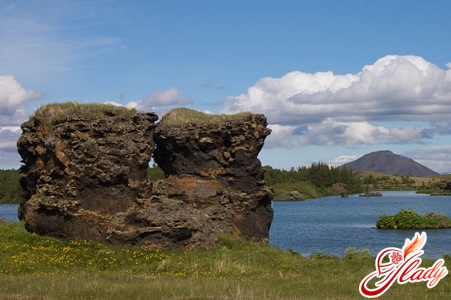
Blue Lagoon - another wonder of nature
The Blue Lagoon is not justlandmark of the country. This is a completely unique place of amazing beauty. The world-famous geothermal pool is located on the Reykjanes Peninsula in the southwest of Iceland. It is famous, first of all, for its sky-blue water, in which not a single bacteria survives. In addition, the water has healing properties: for example, it can cure psoriasis. The color of the water is truly heavenly: the water practically merges with the sky. The water temperature fluctuates between +37 and +40 °C all year round. This place is so loved in Iceland (and not only) that the Lagoon has become a symbol of the "ice country" and a favorite Icelandic resort. However, judging by how many people come here, not only Icelandic. Be sure to swim not only during the day, but also at night, watching the Northern Lights; smear your face with white clay, like savages, and take photos for memory - everyone does it here. You can walk on volcanic lava and be sure to buy the Blue Lagoon Skin Care line of cosmetics - these cosmetics are considered simply miraculous.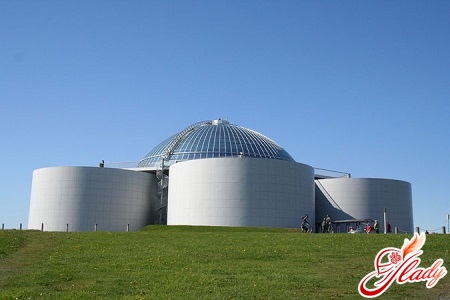
"The smoking bay"
Under such an intricate name liesReykjavik, the capital of Iceland. It is the largest city in the country, and the name "Smoking Bay" was given to it by the first settlers who were impressed by the columns of steam that came from the hot springs. It is best to visit the capital of Iceland in winter. Do not be afraid of the cold: the climate here is quite mild, and the temperature in winter usually stays around zero. Here you can see a lot of interesting historical places, because Reykjavik is considered a city of literature and culture. Indeed, connoisseurs and lovers of art and historical heritage have a lot to offer in Reykjavik. There are a huge number of attractions here: museums, churches, architectural compositions for every taste (someone can visit the Phallus Museum, and someone - the Museum and Gallery of Iceland). You can visit the Hallgrimskirkja Church, which houses a very famous Art Nouveau organ; visit the Arni Magnusson Institute: old books and many historical works are stored here. The Parliament House, the City Art Museum, the Arbær Folk Museum - Reykjavik is famous for its attractions. You can also visit the Vulcan Center, where you can watch fascinating historical films about the most famous Icelandic volcanoes. The most popular is the film about the Surtsey volcano: in 1963, it erupted lava into the sea - this is a miracle that saved the island and the capital from imminent destruction. Another attraction of the capital is the Pearl. This building is in the shape of a pearl. It was built in 1988 as a hot water storage facility. There is only one such complex in the world. More than 180 thousand trees have been planted around the Pearl. There is also an active geyser on the territory of the complex, which is controlled electronically. Six cisterns house a museum of sagas telling the history of the Vikings. Plant lovers must visit the Reykjavik Botanical Garden. The garden is small, but it has room for the most diverse and exotic plants and flowers. For the convenience of visitors, next to each "exhibit" you can see a sign with the name in Latin. The garden is truly amazing. In addition to cultural places, in the capital of Iceland you can observe natural wonders: since the city is located very close to the Arctic Circle, for locals watching the Northern Lights here is not a novelty, but for tourists - a whole event. Here, by the way, you can also swim in the ocean - the water in it is heated!
Icelandic cuisine is another attraction
Indeed, Icelandic cuisine can rightfully beconsidered a landmark. Just don't look at it - it's better to try it and admire the taste. The local cuisine is original, but you should be prepared for the fact that it is unusual for most stomachs. This is not surprising, because a large number of recipes have a centuries-old tradition. The basis of Icelandic cuisine is fish and lamb. Be sure to try fish sandwiches, boiled sheep's head, fish "with a smell", smoked lamb or marinated salmon. Also, do not ignore the volcanic bread and coffee, which is held in high esteem by Icelanders. Well, if you want something strong, drink "brennivin" - an Icelandic strong drink. And to get only pleasure from the food, do not overeat.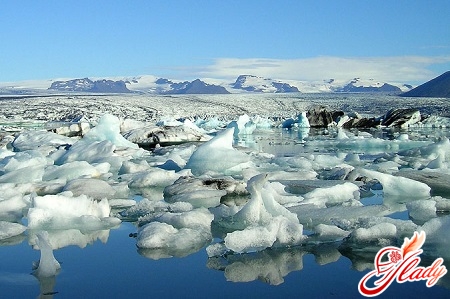
When to visit Iceland
Iceland can be visited at any time of the year,However, it is necessary to take into account some climatic features of the country. Thus, in winter the temperature rarely drops to -1 °C, but daylight lasts no longer than 5 hours, which can be difficult to bear. In summer the temperature is +10 °C, but summer is the period of "white nights", which can also be a difficult test for many people. On the other hand, it can also be very exciting. In addition, the time of visiting the country depends on what sights you want to see: winter is best suited for visiting Reykjavik, and summer - for getting to know the local flora and fauna, waterfalls and volcanoes. The best option is to travel from June to the end of August. Although Iceland is magnificent at any time of the year!




